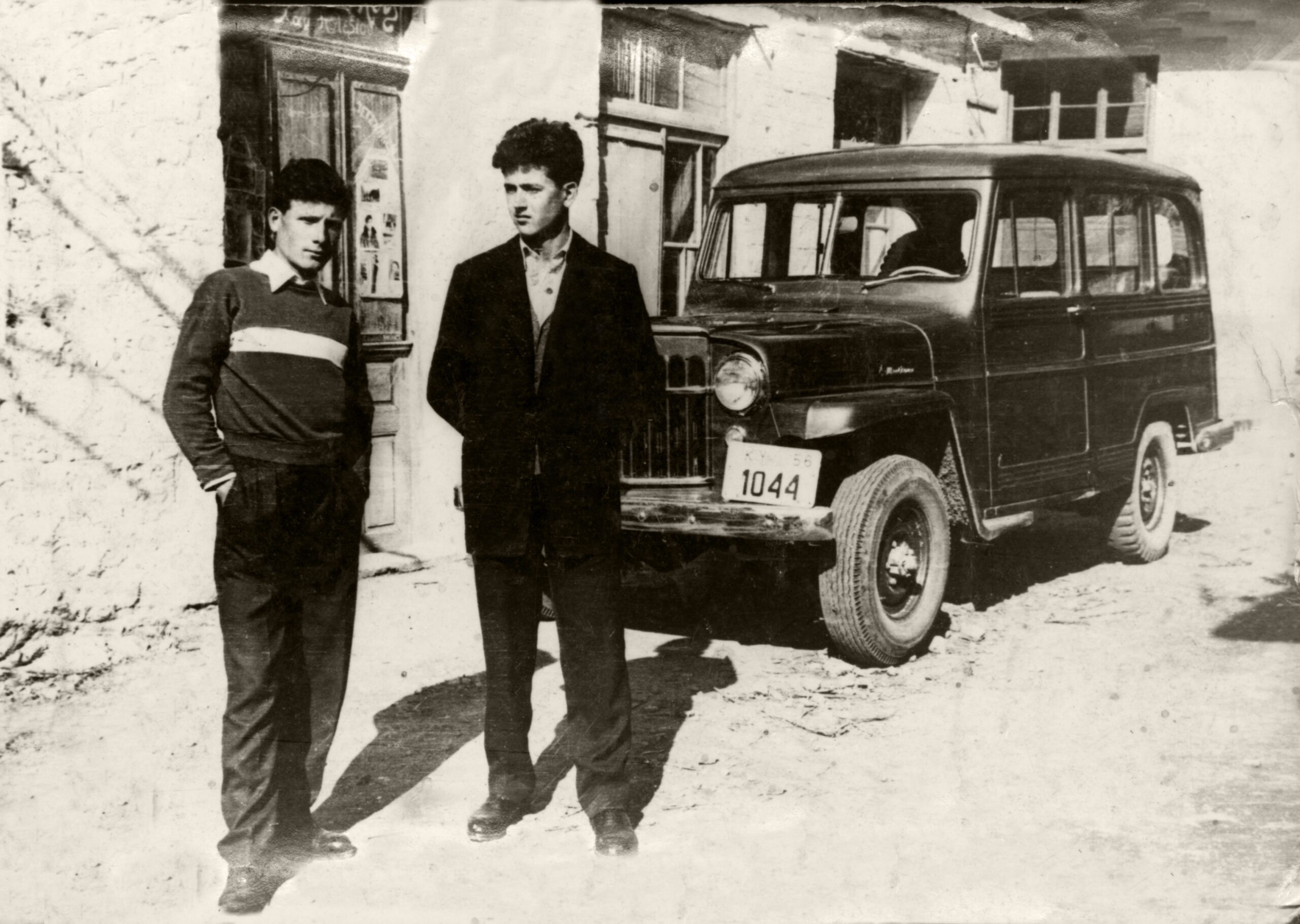“The Kurds & the idea of Statelessness”
Abstract
“No friends but the mountains” is the famous expression that is used by the Kurds. The Kurds are the fourth-largest ethnic group in the Middle East without their own country. They are one of the largest ethnic groups on the planet and according to the latest statistics the population of the Kurds are around 40 to 50 million people who are stateless. In comparison to other ethnic groups in the area, Kurds have experienced much less success. Kurdistan which means “Land of the Kurds” is the name of this geographical and cultural region. The author confirms that currently, the Kurds live in Iraq, Iran, Syria and Turkey, however they have not built a state based on their national identity that is recognized internationally. The paper argues that they have faced marginalization and persecution throughout their century-long struggle for rights, autonomy, and even independence for Kurdistan.
Introduction
The Idea of the statelessness of the Kurds refers to the situation where the Kurdish ethnic group does not have recognized state of their own. This is why they are spread over several countries in the Middle East, Turkey, Iran, Iraq and Syria as well as some other countries around the world. Some researchers believe that the Kurds come from a variety of Indo-European tribes that arrived in the area around 4,000 years ago.
Historically, we can discern various factors for their statelessness, which are nationalist movements, regional conflicts, geopolitical complexity, and domestic policies of the countries in which they live. Some of the factors are listed below:
- Historical background: Kurdistan, which includes portions of modern-day Turkey, Iran, Iraq and Syria, has historically been home to the Kurds. Despite having lived in this area for thousands of years, the Kurds have experienced marginalization, discrimination, and repression, which frequently leads to the suppression of their ambitions for independence.
- Geopolitical complexity: The Kurdish homeland expands over a number of nations, each of which has its own political dynamics, conflicts, and interests. These nations’ borders were established throughout the 20th century by colonial powers and agreements made after World War I, frequently without taking the ethnic, linguistic, or cultural variety of the people living there into account.
- Regional conflicts and unrest: The Middle East’s political environment has been characterized by a number of conflicts and power struggles. The ongoing Syrian Civil War, the Gulf War, and the Iran-Iraq War have all added to the Kurds’ predicament and made it more difficult for them to create an independent state.
- Policies of government and repression: The governments of various nations with sizable Kurdish populations put in place measures intended to assimilate or suppress Kurdish identity and ambitions. Cultural limitations, prohibition of Kurdish language and educational rights, displacement, and violations of human rights have all been a part of this.
- International considerations and diplomacy: Either via diplomatic attempts to address Kurdish rights and ambitions or by backing for the governments of the nations where Kurds live, the international community has contributed to the development of the Kurdish statelessness issue. Finding a thorough and reasonable resolution, nevertheless, has proven difficult.
Language
The Kurdish is the language of the Kurds which has different dialects according to the Kurds in different countries. After the modern Turkish Republic was founded in 1923, Ataturk made the choice to change the Turkish alphabet from Arabic to Latin. In 1924, Turkish authorities established and put into action further regulations to strangle the Kurdish language. The use of Kurdish in writing and speaking was outlawed, and it was mandated that all teaching and information be supplied in Turkish or to people who speak Turkish. Written Kurdish literature was made a crime with a severe prison sentence as a penalty.
According to Iranian law, Kurdish writing and speaking are completely forbidden. It wasn’t until the 1990s that Kurds began writing openly in their own language and taking part in other cultural activities.
In Iraq, the conditions are better, because the Kurdish language, literature, and a number of other forms of cultural expression were protected in Iraq by the 1932 Constitution of Iraq. The situation got worse after 1958, when the Kurdish language started to be used and studied in schools and colleges, and was officially recognized as the country’s second language. What the Kurds have achieved in Iraq, however, is the result of a lengthy struggle against official hostility rather than a gift from a generous government.
Despite the reality that 90% of Syrian Kurds regularly use the Kurdish language. Even though it showed more tolerance toward its Kurdish minority in the 1990s, the Syrian government continues to oppose the teaching of Kurdish in schools and forbids publication and broadcasting in the language.
Religion
At least two thirds of Kurds identify as Sunni Muslims. However, there is a population of Shi’i Kurds. Additionally, there are some Kurds who practice Yezidism, Ahli Haqism, and Alevism. There are also a few thousand Christian Kurds and over 150,000 Jewish Kurds, the most of them live in Israel now.
The Kurds in Turkey
Ataturk quickly began the “Turkification” process after the Lausanne Treaty was signed in 1923, which included making all Kurdish organizations, institutions, publications, and other forms of cultural expression illegal. The Muslim Patrimony, for which the Kurds had fought alongside Ataturk, was revealed to be a lie. When Ataturk defeated the Greeks, Armenians, and Russians, the Kurds were left out. It was followed by Kurdish uprisings against Turkey in 1925, 1930, and 1937. Sheikh Sa’id, The Khoyboun and Sayyid Reza of Dersim, and Sheikh Sa’id were in charge of these three uprisings, which were all ruthlessly put down. Following 45 years of attempting, the Kurds finally succeeded in creating their own party, the PKK. It ended up being the most bloody of all the Kurdish parties. During this prolonged conflict, Turkish military campaigns were highly aggressive. The PKK’s ambitions to unite Kurds in Turkey and advance Kurdish nationalism both at home as well as abroad faced a serious setback with the arrest of its leader, Abdullah Ocalan in 1999 and currently they have arrested the leader of Kurdish party (HDP) Selahattin Demirtaş.
The Kurds in Iran
The Iranian government was against any separate Kurdish party but one thing that is better that the Kurds of Iran did not face the brutality as those happened in Turkey and Iraq. A crucial turning point was the founding of the Kurdistan Democratic Party in Iran (KDPI) in 1945, which would soon announce in Mahabad the founding of the Democratic Republic of Kurdistan by Ghassemlou. The Mahabad Republic, however, only lasted from January to December 1946. Finally, the Iranian government destroyed the Mahabad Republic. All of the KDPI’s attempts to settle with the government were unsuccessful. In fact, the Islamic Republic was more driven by necessity than a sincere desire to resolve the Kurdish question when it agreed to speak with the Kurdish movement on the two occasions. The first time was in October 1979, when Tehran felt endangered and exposed; the second time was in July 1989, when Tehran prepared for the assassination of Abdul Rahman Ghassemlou, the KDPI’s leader and top thinker, strategist, and planner. After the assassinations of Ghassemlou in Vienna and his deputy Sadiq Sharafkandi in Berlin in September 1992, the party and the Kurdish movement in Iran were in chaos.
The Kurds in Iraq
During World War I, Britain made the decision to establish the state of Iraq. Britain was conscious that Kurds made up the majority of Mosul’s population. It planned to establish one or more loosely connected Kurdish provinces that would be part of the newly established state of Iraq. The Kurds, however, were against joining Iraq. They ultimately had a direct confrontation with the British government. From 1919 through the middle of the 1940s, there were multiple Kurdish uprisings against the British troops and the Iraqi government in an effort to create some form of real autonomy for the Kurds in Iraq. An Iranian-Kurdish reunion was once more achieved during the Iran-Iraq conflict, which ran from 1980 to 1988 and saw the Kurds seize and rule a substantial portion of Iraqi Kurdistan. The use of chemical weapons against the Kurdish town of Halabja in March 1988 in response for the Kurds’ military triumphs is evidence of how cruel the Iraqi regime was. Even if there is proof that chemical weapons were deployed, not a single country in the world condemned Iraq’s terrible deeds. The Iraqi army then concentrated on defeating the Kurdish movement after Iran agreed to an end to fighting in August 1988. During this process, thousands of Kurdish villages were destroyed, and the bulk of their inhabitants were either killed or relocated to new towns or southern prison facilities. The army routinely used chemical weapons. According to a number of sources, up to 182,000 people may have killed in military operations that were on level with a fully genocidal operation. After that, the Kurdish military could get rid from the Regime of Sadam Hussien in 1991 and they could establish a first Kurdish autonomy government in 1992. In the end, with the overthrow of Saddam Hussein’s administration in 2004, the Kurdish state area was formally established with its own government and parliament while remaining associated with Baghdad, the seat of Iraq’s central government. In 2014, the Islamic group terrorist (known as ISIS) attempted a genocide against the Yazidis in the northern Iraqi province of Sinjar. As an outcome of the genocide, the Yazidis were driven from their natural territory in Upper Mesopotamia and forced to escape. In addition to killing tens of thousands of Yazidi men, ISIS forced tens of thousands of Yazidi women and girls into sex slavery. It caused 5,000 Yazidi people to die. In August 2014, more than 300 Yazidi households received death threats or were pushed into converting to Sunni Islam. International concern over ISIS’s persecution of Yazidis led to American leadership in Iraq, which started with airstrikes on ISIS. Yazidi people were helped by PKK and YPG fighters who helped establish a humanitarian crossing point over the Sinjar Mountains. Over 500,000 people have fled by ISIS’s attacks on the Yazidi community in 2015. Dr. Sardar Aziz , Researcher and Columnist; Former Senior Advisor in the Kurdish Parliament. He believes that the solutions to resolving the statelessness of the Kurdish people are very difficult. He says his opinion about Kurdish referendum in 2017 by Iraqi Kurds. He was not supported it. He thought that referendum is a right and Kurds should have right to carryon referendum but it was not a time that anybody would have supported of big power and international community. Kurd have sent message to Iraq and the other countries, they are willing to success from the country by doing that may be this country and others may fell threaten and international community did not support that these countries in this regional countries intervene in order to eliminate this threat so referendum had totally opposite outcome and Iraqi Kurds lost Kirkuk and other part of Kurdistan. That was the result of miss calculation. Ideally it is Kurdish right but it was not practical. It was held in wrong time so sometimes you may have right but if you try to push for it in wrong time it might be something that you may not gain or win.
The Kurds in Syria
During the French mandate (1918–1945), the presence of Kurdish political and social groups, publications, use of the Kurdish language, and participation in the army and government provided the appearance that the Kurds in Syria possessed a number of important political and cultural rights. But when Syria became independent, these rights began to rapidly decline. The first Kurdish party was founded in 1957 and they wanted Syria to become a democratic country and Kurds to be introduced as an ethnic group there. Unfortunately, in 1961 when Syria broke in United Arab Republic then political persecution against the Kurds increased. Its application was given legal justification. The result of this was the passing of Decree 93, which mandated a special population in the Kurdish region of Jezira and resulted in the loss of Syrian citizenship for 120,000 Kurds. After the Ba’th took over in 1963, the genocide of the Kurds increased. A plan to Arabize the entire world included the establishment of an Arab Belt (al-Hizam al-Arabi). Many of the Kurdish regions bordering Turkey and Iraq were included in it. Getting the Kurds out of their homes and pushing them to leave the border regions for both inside and outside of Syria was the plan’s objective. In 1972, when Hafiz Assad got the power as a leader so he gave some rights to the Kurds and also used the Kurds to fight against some Arab groups especially the radical sunnis. Currently, The Kurds in Syria (Rojava) now they have a De facto autonomous region in their parts in Syria after along sacrificed and long tragic history.
Conclusion
We come to the conclusion that the experience of the Kurds in the 20th century demonstrates three related problems that have hindered Kurdish national rights: communication issues (linguistic and religious diversity); problems with common political action (political disunity); and, most importantly, issues with external influence, repeated abuse, and lack of a superpower’s support in the face of oppressive regimes like Turkey, Iran, Iraq, Syria. Despite the fact that all Kurds are aware of their common ethnicity and have occasionally taken part in nationalist activities, there has never been a unified Kurdish movement. Division along personal, tribal, regional, and sectarian lines has frequently been common. The geopolitical situation has also made the Kurds more vulnerable to the influence of other powers.
Throughout all revolutions, Kurdish officials have repeatedly sought outside help to protect national rights. However, they hardly ever acknowledged that they were fighting in other people’s wars. Outside forces are more likely to take advantage of and murder the Kurds because they have few options and, maybe more crucially, since they don’t care about their fate. Kurdish society has been so dispersed since the establishment of well-protected state boundaries dividing Kurdistan in 1923 that its repercussions threaten the Kurds’ unity as a nation.
The destiny of the Kurds is still uncertain. The Kurdish national identity has increased greatly over the past few years in spite of military pressure and will never disappear. However, because enemies surround them, Kurdish national rights will continue to be denied for a very long time. This is especially true given the United States’, Russia’s, European countries’, and United Nations’ disregard for the national, civil, and human rights crimes committed by the occupying countries in Kurdistan.
Bibliography
David, McDowall. The Kurds of Syria. London: Kurdish Human Rights Project. 1998.
Nebez, Jemal. The Kurds, History and Culture. London: WKA publications. 2004.
Martin, Van Bruinessen. Kurdish Society, Ethnicity, Nationalism and Refugee Problem.
London: Routledge. 1992, 48-54.
Meho, Lokman I. The Kurds and Kurdistan: a general background. 2001.
Michael, Gunter. The Kurds Ascending. New York: Palgrave MacMillan. 2008, 3.
Omar, Sheikhmous. The Kurdish Question: Conflict Resolution Strategies at the Regional level.
Lynee Rienner Publishers. 1994, 149.





























